Location and Access
 Built alongside the River Nith, the village of New Cumnock is approximately 22km from Ayr and about the same distance from Kilmarnock on the A76 Dumfries road. Craigdullyeart Hill (NS 659 159) lies to the north-east of the village and is reached by turning off the A76 (just before the black and white chevron sign) onto the unclassified road at Pathhead / Mansefield about a kilometre from the roundabout at the western end of the village. Continue along this road past Mansefield Mains and Meikle Garclaugh and you will see Corsencon Hill directly ahead.
Built alongside the River Nith, the village of New Cumnock is approximately 22km from Ayr and about the same distance from Kilmarnock on the A76 Dumfries road. Craigdullyeart Hill (NS 659 159) lies to the north-east of the village and is reached by turning off the A76 (just before the black and white chevron sign) onto the unclassified road at Pathhead / Mansefield about a kilometre from the roundabout at the western end of the village. Continue along this road past Mansefield Mains and Meikle Garclaugh and you will see Corsencon Hill directly ahead.

Just past the second farm there’s a junction and a give-way sign, go straight on here and you will see Craigdullyeart Hill to the left. The road at this point is quite narrow and winds up the valley between Corsencon and Craigdullyeart for about 2 kilometres. Once you reach the end of the tarmac at the top of the hill there is a gravel track which runs into a large spruce plantation to the north-east.
![]() Off-road tracks unsuitable for wheelchair users. -4 places to stop on road and view glen. Turning space at top good for birds.
Off-road tracks unsuitable for wheelchair users. -4 places to stop on road and view glen. Turning space at top good for birds.
![]() Quiet byways with some steep gradients.
Quiet byways with some steep gradients.
Access Update
Following the completion of open-cast mining operations, all entry restrictions have been removed, the coal conveyor has been dismantled and the area landscaped. Access to Glen Farm from Mansfield Road, New Cumnock is on a newly improved tarmac road which ends at a small parking area. After this the access road is currently in poor condition for driving but easily walkable. A wind turbine development is proposed for part of this area which may improve access in the future.
Mike Howes, February 2017Birds
The area around Craigdullyeart is a mixture of farmland, heather moorland and conifer plantation, creating a mosaic of habitats which attracts a variety of different birds. Exploring the area on foot is obviously the best option, but if you are driving the following technique can be very useful. Go all the way to the top of the road (where the tarmac ends), spend some time scanning along the drystane dykes which run along the bottom of Corsencon on the left, then slowly drive back down using your car as a mobile hide. This allows good close views of birds on either side of the road and you can stop at a number of vantage points which look out over the glen and surrounding countryside. At the top of the glen where the large Sitka Spruce plantation begins, Skylark, Reed Bunting and Lesser Redpoll can be found, (watch out for Skylarks perching on the fire-beaters by the side of the road), this is also a good area to look for Crossbill. As you come back down the glen, the young plantations on either side of the road are excellent for Stonechat, Whinchat and Meadow Pipit. There is a Black Grouse lek on the lower slope of Corsencon which can be observed from near the top of the road, there are sometimes up to 6 birds here during the breeding season. At other times Black Grouse can be seen amongst the small trees in the plantations or perched up on the drystane dykes which criss-cross the site. Short-eared Owl also breed in the glen, but only seem to do so in years when Field Voles are abundant. Kestrel can always be seen, Sparrowhawk have nested in one of the plantations and there is usually a Buzzard or two over the hill. Curlew are particularly noticeable flying up and down the glen during the breeding season. The lower part of the site where the farmland begins is worth a look for species such as Yellowhammer, Linnet and Bullfinch. In summer the area holds plenty of Warblers and Hirundines and in winter the fields can be covered in Thrushes and Starlings. Early summer is probably the best time for a visit, although there is a fair chance that migrants could be located on Corsencon at the appropriate times during spring and autumn passage.
Other Information
By following the unclassified road down past Merkland Farm and the front of Corsencon, excellent views can be had over the floodplain of the River Nith where there are often flocks of geese in the winter. To do this, turn left at the road junction on your way back down the glen.
New Cumnock is reasonably well served by public transport, regular buses run from Cumnock and there is a frequent train service from Glasgow / Kilmarnock. The main bus service is the No 43 which leaves The Tanyard in Cumnock twice an hour. Trains from Glasgow and Kilmarnock (or stations in between) are either Carlisle or Newcastle services and run approximately every hour although the times do vary throughout the day. Craigdullyeart and the other nearby New Cumnock sites would be well suited for cycling around as the back roads around the village are fairly quiet. Cycling birders would however be well advised to avoid the A76 outside the boundaries of the village as this is one of the busiest roads in this part of the county.

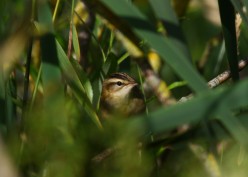

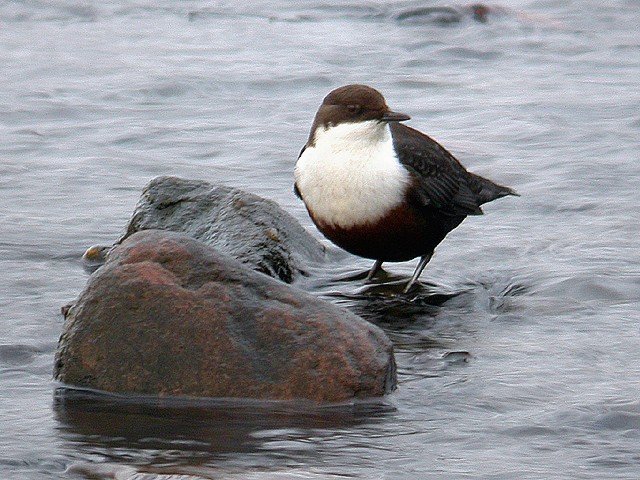
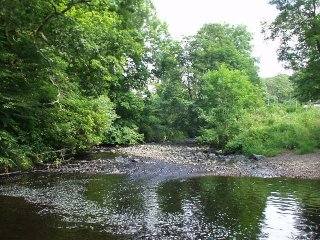
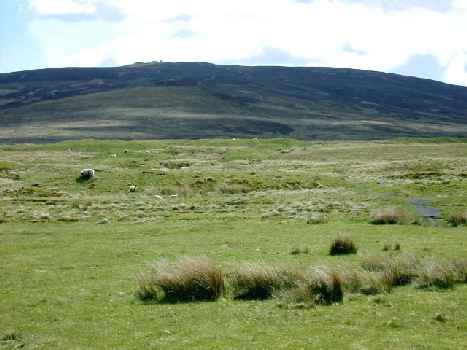
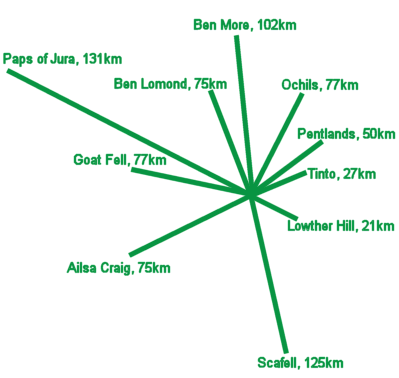
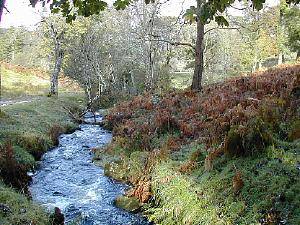



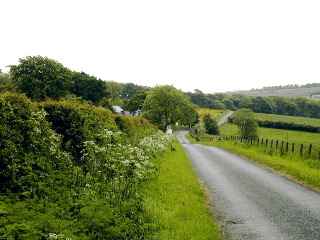
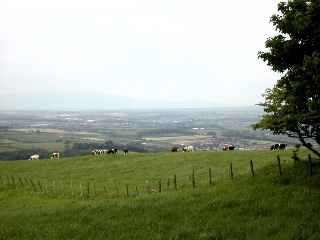 Each town has a strong historic heritage. Cultural and environmental interests can be combined. For more details contact:
Each town has a strong historic heritage. Cultural and environmental interests can be combined. For more details contact:
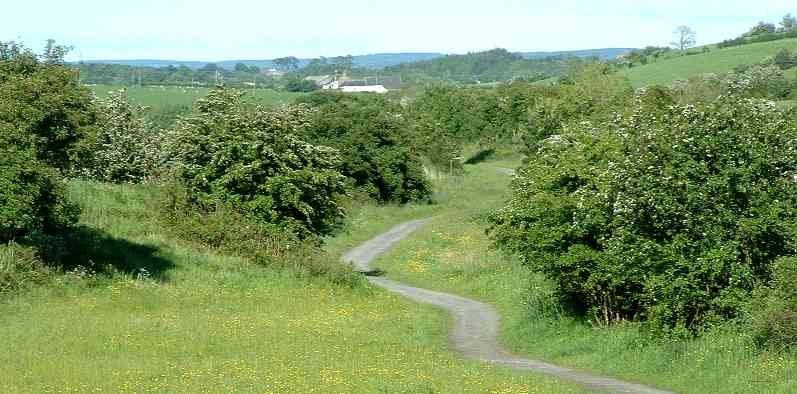 Access the line from the north side of Knockentiber village on the B751 at OS grid reference NS 400 96 or the unclassified road to Kilmarnock at NS 404 95. Access at the north end of Springside on Overton Road (to Warwickdale) at NS 69 91 or via the farm track (which crosses a stubble field in winter) at NS 69 93 which will direct you onto the line approximately 0.5 km east of the village. While it is a 4 km walk from end to end, the areas of greatest interest are actually around the villages. Park in either village and walk the path in either direction. It is an ideal site to cover by bicycle. Alternatively, an unclassified road from Knockentiber to the Cunninghamhead area crosses the line approximately half way where there is space for roadside parking on the left after the bridge.
Access the line from the north side of Knockentiber village on the B751 at OS grid reference NS 400 96 or the unclassified road to Kilmarnock at NS 404 95. Access at the north end of Springside on Overton Road (to Warwickdale) at NS 69 91 or via the farm track (which crosses a stubble field in winter) at NS 69 93 which will direct you onto the line approximately 0.5 km east of the village. While it is a 4 km walk from end to end, the areas of greatest interest are actually around the villages. Park in either village and walk the path in either direction. It is an ideal site to cover by bicycle. Alternatively, an unclassified road from Knockentiber to the Cunninghamhead area crosses the line approximately half way where there is space for roadside parking on the left after the bridge.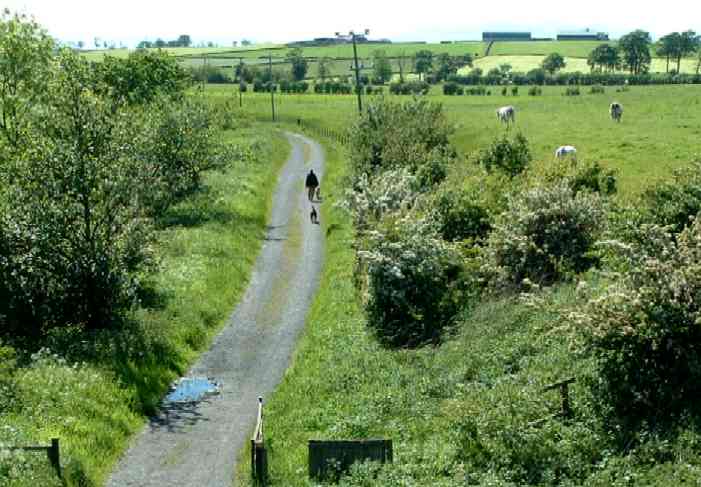 The disused railway line is a rich, semi-natural, linear habitat of overgrown hedgerow, scrub and rough grassland verges traversing some fairly interesting farmland. The land is drained by the Garrier and Woodhill Burns. Smaller areas include a juncus rush marsh, bramble-strewn wasteland, nettle beds, bricks and mortar and a marshy cutting on the line (before recently introduced drainage). However, recent tarmac “improvements” at the Knockentiber end have damaged much of the habitat, although hopefully within time the area will recover. Fly-tipping, burnt-out cars and illegal shooting are all a problem here from time to time.
The disused railway line is a rich, semi-natural, linear habitat of overgrown hedgerow, scrub and rough grassland verges traversing some fairly interesting farmland. The land is drained by the Garrier and Woodhill Burns. Smaller areas include a juncus rush marsh, bramble-strewn wasteland, nettle beds, bricks and mortar and a marshy cutting on the line (before recently introduced drainage). However, recent tarmac “improvements” at the Knockentiber end have damaged much of the habitat, although hopefully within time the area will recover. Fly-tipping, burnt-out cars and illegal shooting are all a problem here from time to time.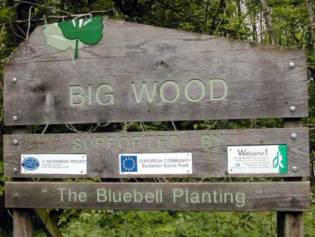 The aptly named Big Wood (NS 515 75), known locally as “The Bluebell Planting” is about 24 km from Ayr just east of Galston on the A71 next to Loudoun Golf Course. The wood is privately owned, but is managed by East Ayrshire Woodlands who have a 25 year management agreement allowing public access. Parking is available in the lay-by at Hags Bridge (NS 517 71) off the A71. A well defined track (which is also a public Right Of Way) starts just beside the lay-by and runs up through the site to Woodhead Farm. Walking up the track gives excellent views of the varied habitat and of some of the magnificent specimen trees in the wood, there is also plenty of scope to do a little exploring off the beaten track, but please observe any “private property” signs you come across.
The aptly named Big Wood (NS 515 75), known locally as “The Bluebell Planting” is about 24 km from Ayr just east of Galston on the A71 next to Loudoun Golf Course. The wood is privately owned, but is managed by East Ayrshire Woodlands who have a 25 year management agreement allowing public access. Parking is available in the lay-by at Hags Bridge (NS 517 71) off the A71. A well defined track (which is also a public Right Of Way) starts just beside the lay-by and runs up through the site to Woodhead Farm. Walking up the track gives excellent views of the varied habitat and of some of the magnificent specimen trees in the wood, there is also plenty of scope to do a little exploring off the beaten track, but please observe any “private property” signs you come across.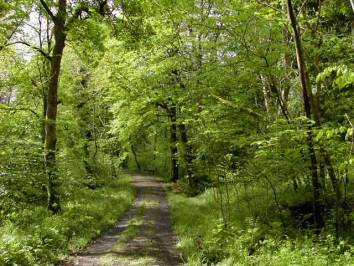 Big Wood is the site of an ancient woodland which has been extensively managed in the past. As part of Loudoun Castle Estate the woods were replanted in the late 19th and early 20th Century as a designed landscape, this accounts for many of the mature specimen trees which are in the woods today. The woods are largely comprised of Oak, Beech, Elm and Ash with a good under-storey of Hazel, Elder, Rowan and Holly. In spring the wood is carpeted with Bluebells, making this a particularly attractive time to visit, there is also a great variety of plants and wildflowers to be found right through the summer.
Big Wood is the site of an ancient woodland which has been extensively managed in the past. As part of Loudoun Castle Estate the woods were replanted in the late 19th and early 20th Century as a designed landscape, this accounts for many of the mature specimen trees which are in the woods today. The woods are largely comprised of Oak, Beech, Elm and Ash with a good under-storey of Hazel, Elder, Rowan and Holly. In spring the wood is carpeted with Bluebells, making this a particularly attractive time to visit, there is also a great variety of plants and wildflowers to be found right through the summer.